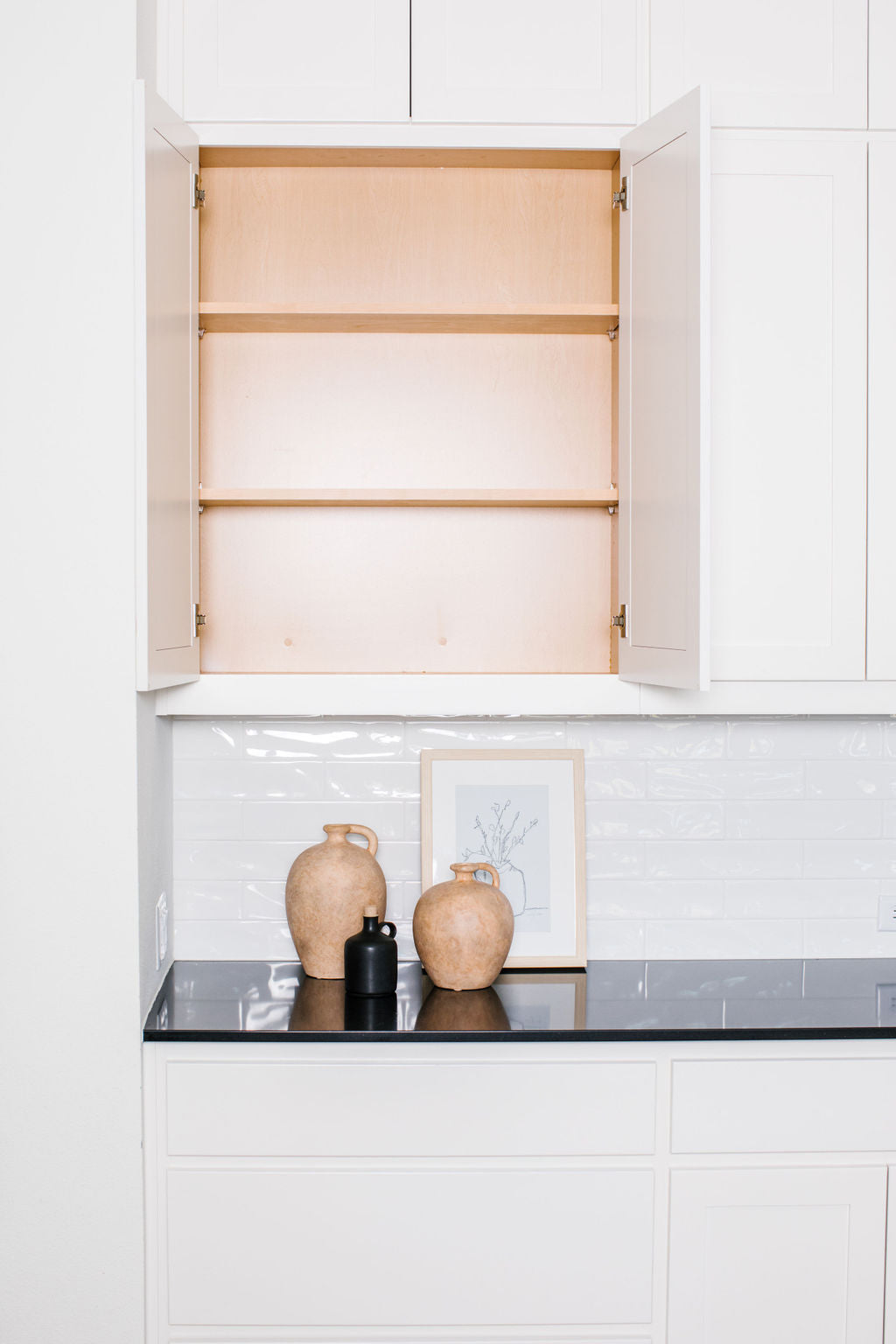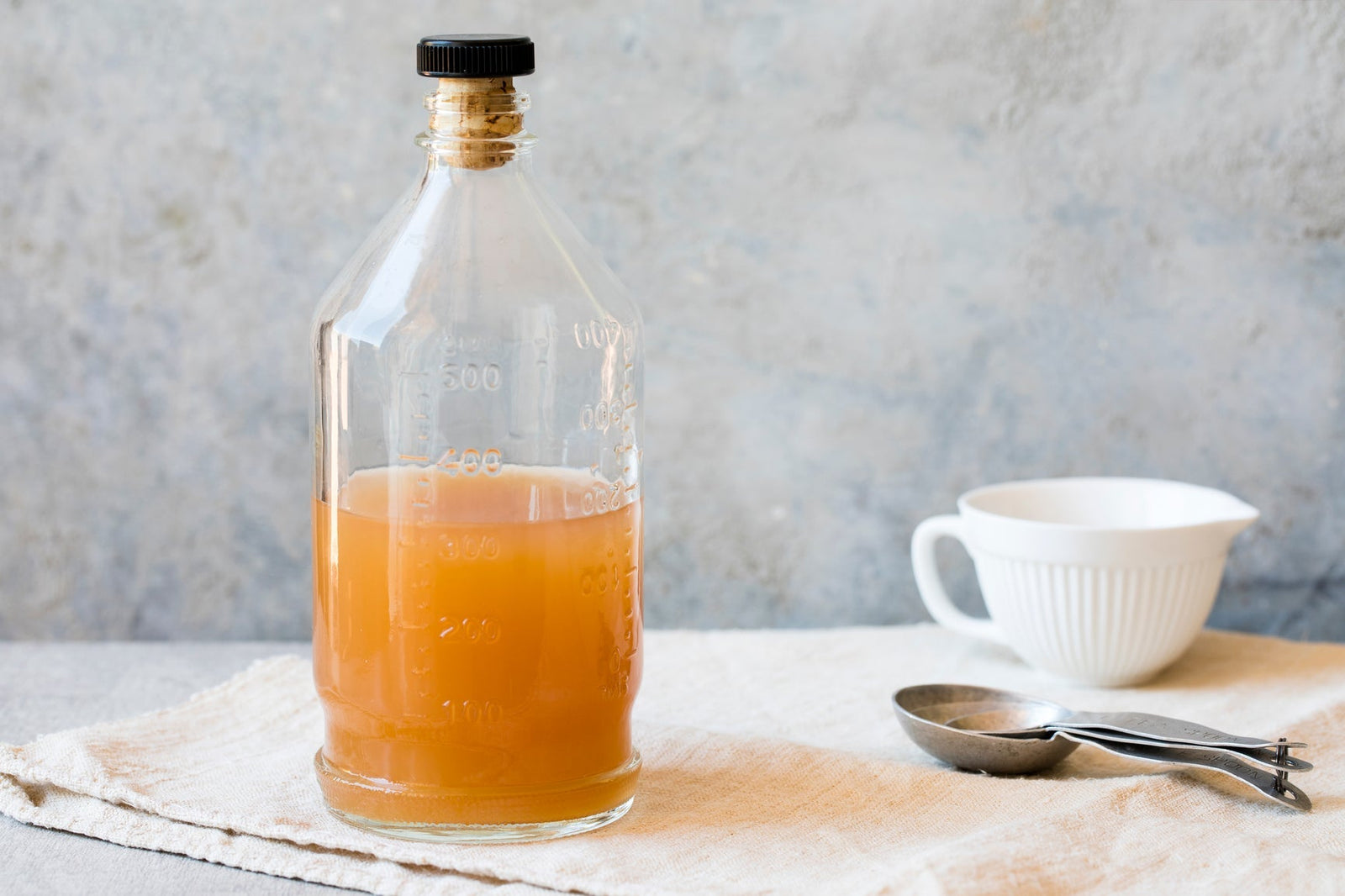How to Naturally Clean Grease Off Kitchen Cabinets

Kitchen cabinets often receive the brunt of oily and greasy kitchen messes. Food and grease splatters are common while pulling together a delicious home cooked meal, leaving your kitchen cabinets greasy and grimy.
Plus, dirt and dust (tiny floating particles harboring biological contaminants and harmful synthetic chemicals and toxins) are easily attracted to the sticky grease residue that builds up overtime and, inevitably, ends up on your dishes, hands, and food.
Fortunately, with the right natural products or DIY cleaners, and a little bit of elbow grease (pun intended!), cleaning your kitchen cabinets is a simple and quick task.
Here, we show you how to clean grease off kitchen cabinets naturally using Branch Basics and common household items like baking soda, vinegar, and castile liquid soap.
Let’s dive in!
Branch Basics
Branch Basics is an all-in-one, plant- and mineral-based, ultra-gentle, fragrance-free, human- and environmentally-safe cleaning line designed to replace every cleaner and laundry product in your home with just one Concentrate.
For cleaning kitchen cabinets, we recommend making and using our All-Purpose spray. For cabinets made with glass, we recommend pairing All-Purpose with Streak-Free (more on that below).
Branch Basics is tough on grease while safe to use on just about any kitchen cabinet material including wood, glass, vinyl, laminate, gloss, painted, and stainless steel.
Here’s how to clean grease off kitchen cabinets naturally using Branch Basics.
What you’ll need:
- Branch Basics All-Purpose
- Branch Basics Streak-Free (only needed if your kitchen cabinets are made with glass)
- Split microfiber cloths
- Soft bristled toothbrush (optional for heavily soiled cabinets)
To clean grease off gloss, painted, laminate, and vinyl kitchen cabinets:*
-
Spray All-Purpose onto your cabinets, focusing on grease and food splatter.
-
Use a microfiber cloth, or soft bristled toothbrush, to work the soapy solution over the cabinet surface. Use soft to medium pressure to agitate any grease and grime stains.
-
Let sit for 1-3 minutes.
-
Wipe clean with a damp microfiber cloth.
-
Repeat as needed for stubborn grease and grime.
- Let dry.
To clean grease off wood kitchen cabinets:*
Because wood is a porous material, it’s best to never saturate it with water or diluted dish soap. Overtime, oversaturation can cause damage to the wood’s finish.
Instead, do the following:
-
Lightly spray a microfiber cloth with All-Purpose.
-
Gently scrub the greasy spots, following the grain, to avoid damaging the wood finish.
-
Use a damp microfiber cloth to wipe away any soapy solution left behind.
-
Buff the wood with a dry microfiber cloth to shine your cabinets up.
- Let dry.
*Always test Branch Basics on an inconspicuous area of the sealed wood surfaces to make sure the finish is not impacted.
To clean grease off glass kitchen cabinets:
If your kitchen cabinets are made with glass, first use the appropriate method above for wood or other materials surrounding the glass. Then, follow with Streak-Free for sparkling, smudge- and grease-free glass.
Still have stuck-on, stubborn grease? Try undiluted Branch Basics Concentrate.
That’s right! If you come across a thick, stubborn, stuck-on grease or grime stain, try applying a small amount of Concentrate directly to a damp microfiber cloth, and wipe the area over again. * Follow with a damp cloth to wipe away any soapy residue. Repeat until the grease stain is fully removed.
And, while you’re at it, why not tackle grease and grime found on stove top grates, too? Learn how in: How to Clean Stove Top Grates Naturally: 5+ Tips.
Castile Soap + Baking Soda + Vinegar
Combining baking soda and vinegar together creates carbon dioxide - a powerful, safe and natural concoction that helps to remove and clean grease off kitchen cabinets (and many other surfaces for that matter!).
Add the natural cleaning effect of castile liquid soap, and your kitchen cabinets will be grease-free in no time.
Here’s how to clean grease off kitchen cabinets naturally using castile liquid soap, baking soda, and vinegar.
What you’ll need:
- A natural, non-toxic castile liquid soap like , Vermont Castile Soap, or Natural Way Organic, St. Clare Castile Soap, Carolina Castile Soap, Cove Castile Soap
- Distilled white vinegar
- Baking soda
- Warm water
- Microfiber cloths
- Spray bottle
To use:
-
Before you begin, ventilate the room well by opening up windows and turning on fans.
Note: Vinegar contains acetic acid, which becomes an eye and lung irritant when sprayed. Make sure you avoid breathing the fumes and provide good ventilation (as mentioned in Step 1) to clear the air quickly of the acetic acid. Do not spray any vinegar or vinegar solutions around the elderly, babies, young children, or the chronically ill.
-
Fill a spray bottle with 1 cup distilled white vinegar, a few drops of liquid castile soap, and 1 Tablespoon baking soda. Top with water, diluting as desired.
-
Let the mixture fizz and settle before using (this will help prevent extra mess as you clean).
-
Spray kitchen cabinets with the solution and scrub with a soft bristled toothbrush or microfiber cloth.
-
Let sit for a few minutes, then follow with a damp microfiber cloth to remove grease and grime.
- Let dry.
Note: Always test vinegar and baking soda on a small, inconspicuous area before cleaning all kitchen counters. These natural ingredients can damage some cabinet materials, especially wood. Always rinse cabinets immediately after they have been cleaned.
Baking Soda and Water
Baking soda is a powerful, natural and non-toxic degreasing product that won’t scratch or damage your kitchen cabinets. Plus, it’s safe to use around food.
Pure baking soda is great for use on all kitchen cabinet materials, but is especially useful on wood*, as it is abrasive enough to remove grease stains without harming the natural wood finish. Because wood is a porous material, it’s important to act quickly before grease splatter has time to set in.
*Even though baking soda is a mold abrasive, still always test on an inconspicuous area to make sure the finish is not impacted.
Here’s how to use baking soda and water to clean grease off kitchen counters naturally.
What you’ll need:
- Baking soda
- Warm water
- Bowl
- Microfiber cloths
To use:
-
In a bowl, make a paste with 1 part water, 2 parts baking soda.
-
Use a microfiber cloth to dab the paste onto the grease stains.
-
Let sit for 3 to 5 minutes.
- Wipe clean and buff with a dry microfiber cloth.
White Vinegar and Water
The natural acetic acid found in white vinegar is excellent for removing oily and greasy residues from fingerprints and food splatter.
Here are two methods to clean grease off kitchen counters with white vinegar and water.
What you’ll need:
- Distilled white vinegar
- Warm water
- Bowl
- Microfiber cloths
Method #1: Distilled White Vinegar + Water
-
In a bowl, mix equal parts warm water and vinegar.
-
Dip a microfiber cloth into the solution and scrub each cabinet, focusing on greasy stains.
Note: Always wring out the cloth so it is lightly dampened. Do not oversaturate wood cabinets.
-
Let sit for 3 to 5 minutes.
-
Wet a clean microfiber cloth in warm water. Wring the cloth out, especially if you are cleaning wood kitchen cabinets.
-
Wipe the damp microfiber cloth over the kitchen cabinets to remove grease.
-
Buff with a dry microfiber cloth. Let air dry.
Method #2: Undiluted Vinegar Soak
-
Soak a microfiber cloth in a bowl of undiluted vinegar.
-
Wring the cloth out so it’s damp. Wipe kitchen cabinets down, focusing on greasy areas.
-
Let sit for 10 to 15 minutes.
-
Wet a clean microfiber cloth in warm water. Wring it out and thoroughly wipe the cabinets down.
- Buff with a dry microfiber cloth. Let dry.
Note: As mentioned above, although vinegar is safe and non-toxic, it is highly acidic and should only be kept out of the reach of children and pets. If anyone in your home is sensitive to smells or has a respiratory illness, it’s best to not make vinegar or vinegar solutions airborne by spraying. Instead, try the bowl methods described here, wiping the vinegar onto kitchen cabinets versus spraying. And, keep the windows open, and fans running when you do.
For more cleaning tips and tricks with vinegar, check out 12 Ways to Use Vinegar in Your Home.
Toss the Toxins With Branch Basics
As you can see, natural, human-safe products and everyday household pantry items can power through tough grease and grime found on kitchen cabinets.
If you’re interested in trying out Branch Basics for grease stains, laundry, house and car cleaning, carpet cleaning, personal care, pet-safe cleaning, and more, check out our Starter Kits (available in reusable glass or plastic).
And for more grease and grime cleaning tips using human-safe products and methods, check out:
Categories

Kelly Love
Kelly is proof that switching to a pure, natural lifestyle is powerful even for those who consider themselves healthy. She’s experienced how much our everyday choices impact our quality of life and is passionate about helping others see and feel the connection. She lives in Jackson, Mississippi with her husband and two daughters.







